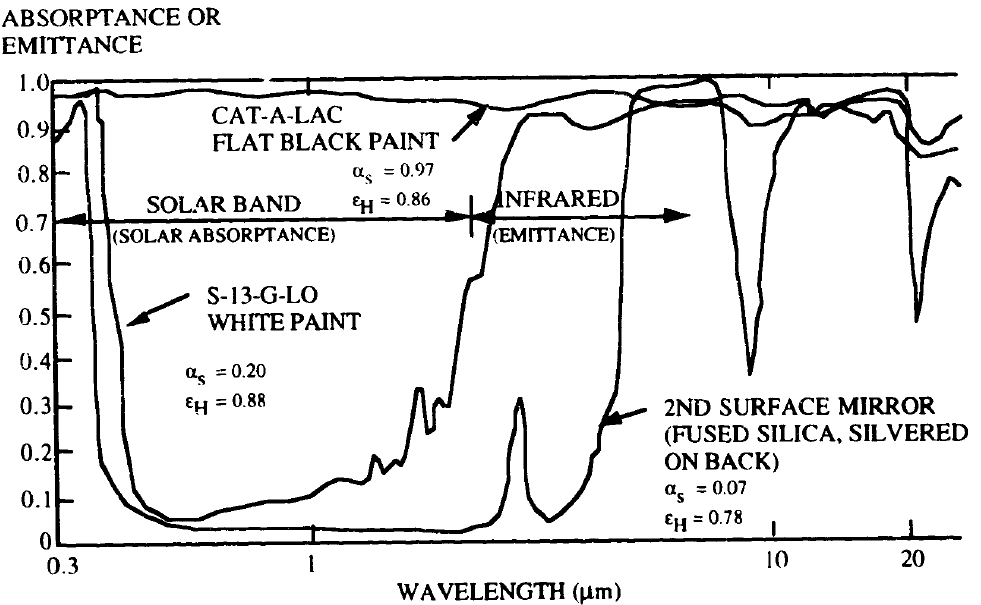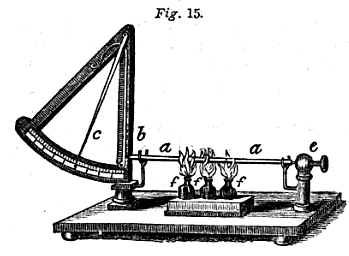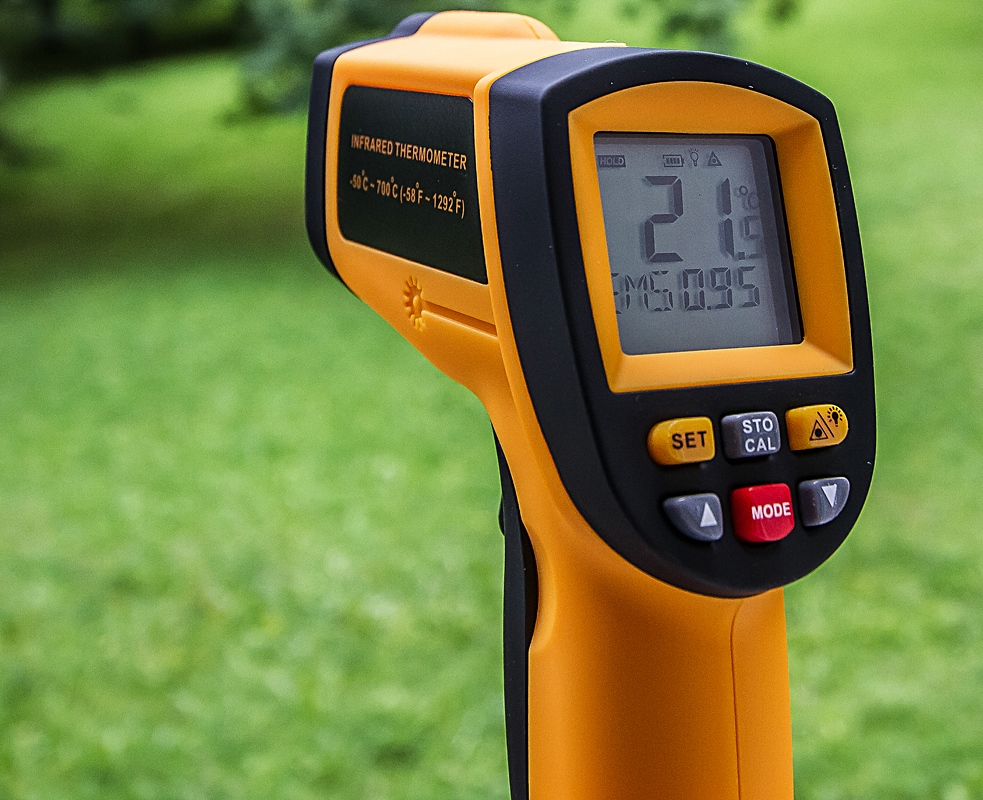|
Sakuma–Hattori Equation
The Sakuma–Hattori equation is a mathematical model for predicting the amount of thermal radiation, radiometric flux or radiometric power emitted from a perfect blackbody or received by a thermal radiation detector. History The Sakuma–Hattori equation was first proposed by Fumihiro Sakuma, Akira Ono and Susumu Hattori in 1982. In 1996, a study investigated the usefulness of various forms of the Sakuma–Hattori equation. This study showed the Planckian form to provide the best fit for most applications. This study was done for 10 different forms of the Sakuma–Hattori equation containing not more than three fitting variables. In 2008, BIPM CCT-WG5 recommended its use for radiation thermometry uncertainty budgets below 960 °C. General form The Sakuma–Hattori equation gives the electromagnetic signal from thermal radiation based on an object's temperature. The signal can be electromagnetic flux or signal produced by a detector measuring this radiation. It has been s ... [...More Info...] [...Related Items...] OR: [Wikipedia] [Google] [Baidu] |
Thermal Radiation
Thermal radiation is electromagnetic radiation generated by the thermal motion of particles in matter. Thermal radiation is generated when heat from the movement of charges in the material (electrons and protons in common forms of matter) is converted to electromagnetic radiation. All matter with a temperature greater than absolute zero emits thermal radiation. At room temperature, most of the emission is in the infrared (IR) spectrum. Particle motion results in charge-acceleration or dipole oscillation which produces electromagnetic radiation. Infrared radiation emitted by animals (detectable with an infrared camera) and cosmic microwave background radiation are examples of thermal radiation. If a radiation object meets the physical characteristics of a black body in thermodynamic equilibrium, the radiation is called blackbody radiation. Planck's law describes the spectrum of blackbody radiation, which depends solely on the object's temperature. Wien's displacement law de ... [...More Info...] [...Related Items...] OR: [Wikipedia] [Google] [Baidu] |
Wien's Displacement Law
Wien's displacement law states that the black-body radiation curve for different temperatures will peak at different wavelengths that are inversely proportional to the temperature. The shift of that peak is a direct consequence of the Planck radiation law, which describes the spectral brightness or intensity of black-body radiation as a function of wavelength at any given temperature. However, it had been discovered by Wilhelm Wien several years before Max Planck developed that more general equation, and describes the entire shift of the spectrum of black-body radiation toward shorter wavelengths as temperature increases. Formally, Wien's displacement law states that the spectral radiance of black-body radiation per unit wavelength, peaks at the wavelength ''λ''peak given by: :\lambda_\text = \frac where ''T'' is the absolute temperature. ''b'' is a constant of proportionality called ''Wien's displacement constant'', equal to or . This is an inverse relationship between wave ... [...More Info...] [...Related Items...] OR: [Wikipedia] [Google] [Baidu] |
Statistical Mechanics
In physics, statistical mechanics is a mathematical framework that applies statistical methods and probability theory to large assemblies of microscopic entities. It does not assume or postulate any natural laws, but explains the macroscopic behavior of nature from the behavior of such ensembles. Statistical mechanics arose out of the development of classical thermodynamics, a field for which it was successful in explaining macroscopic physical properties—such as temperature, pressure, and heat capacity—in terms of microscopic parameters that fluctuate about average values and are characterized by probability distributions. This established the fields of statistical thermodynamics and statistical physics. The founding of the field of statistical mechanics is generally credited to three physicists: *Ludwig Boltzmann, who developed the fundamental interpretation of entropy in terms of a collection of microstates *James Clerk Maxwell, who developed models of probability distr ... [...More Info...] [...Related Items...] OR: [Wikipedia] [Google] [Baidu] |
ASTM Subcommittee E20
ASTM International, formerly known as American Society for Testing and Materials, is an international standards organization that develops and publishes voluntary consensus technical standards for a wide range of materials, products, systems, and services. Some 12,575 ASTM voluntary consensus standards operate globally. The organization's headquarters is in West Conshohocken, Pennsylvania, about northwest of Philadelphia. It is founded in 1902 as the American Section of the International Association for Testing Materials (see also International Organization for Standardization). History A group of scientists and engineers, led by Charles Dudley, formed ASTM in 1898 to address the frequent rail breaks affecting the fast-growing railroad industry. The group developed a standard for the steel used to fabricate rails. Originally called the "American Society for Testing Materials" in 1902, it became the "American Society for Testing And Materials" in 1961. In 2001, ASTM official ... [...More Info...] [...Related Items...] OR: [Wikipedia] [Google] [Baidu] |
Emissivity
The emissivity of the surface of a material is its effectiveness in emitting energy as thermal radiation. Thermal radiation is electromagnetic radiation that most commonly includes both visible radiation (light) and infrared radiation, which is not visible to human eyes. A portion of the thermal radiation from very hot objects (see photograph) is easily visible to the eye. The emissivity of a surface depends on its chemical composition and geometrical structure. Quantitatively, it is the ratio of the thermal radiation from a surface to the radiation from an ideal black surface at the same temperature as given by the Stefan–Boltzmann law. The ratio varies from 0 to 1. The surface of a perfect black body (with an emissivity of 1) emits thermal radiation at the rate of approximately 448 watts per square metre at room temperature (, ). All real objects have emissivities less than 1.0, and emit radiation at correspondingly lower rates. Emissivities are important in several conte ... [...More Info...] [...Related Items...] OR: [Wikipedia] [Google] [Baidu] |
Radiance
In radiometry, radiance is the radiant flux emitted, reflected, transmitted or received by a given surface, per unit solid angle per unit projected area. Radiance is used to characterize diffuse emission and reflection of electromagnetic radiation, and to quantify emission of neutrinos and other particles. The SI unit of radiance is the watt per steradian per square metre (). It is a ''directional'' quantity: the radiance of a surface depends on the direction from which it is being observed. The related quantity spectral radiance is the radiance of a surface per unit frequency or wavelength, depending on whether the spectrum is taken as a function of frequency or of wavelength. Historically, radiance was called "intensity" and spectral radiance was called "specific intensity". Many fields still use this nomenclature. It is especially dominant in heat transfer, astrophysics and astronomy. "Intensity" has many other meanings in physics, with the most common being power per unit ar ... [...More Info...] [...Related Items...] OR: [Wikipedia] [Google] [Baidu] |
Thermal Radiation
Thermal radiation is electromagnetic radiation generated by the thermal motion of particles in matter. Thermal radiation is generated when heat from the movement of charges in the material (electrons and protons in common forms of matter) is converted to electromagnetic radiation. All matter with a temperature greater than absolute zero emits thermal radiation. At room temperature, most of the emission is in the infrared (IR) spectrum. Particle motion results in charge-acceleration or dipole oscillation which produces electromagnetic radiation. Infrared radiation emitted by animals (detectable with an infrared camera) and cosmic microwave background radiation are examples of thermal radiation. If a radiation object meets the physical characteristics of a black body in thermodynamic equilibrium, the radiation is called blackbody radiation. Planck's law describes the spectrum of blackbody radiation, which depends solely on the object's temperature. Wien's displacement law de ... [...More Info...] [...Related Items...] OR: [Wikipedia] [Google] [Baidu] |
Black Body
A black body or blackbody is an idealized physical body that absorbs all incident electromagnetic radiation, regardless of frequency or angle of incidence. The name "black body" is given because it absorbs all colors of light. A black body also emits black-body radiation. In contrast, a white body is one with a "rough surface that reflects all incident rays completely and uniformly in all directions." A black body in thermal equilibrium (that is, at a constant temperature) emits electromagnetic black-body radiation. The radiation is emitted according to Planck's law, meaning that it has a spectrum that is determined by the temperature alone (see figure at right), not by the body's shape or composition. An ideal black body in thermal equilibrium has two main properties: #It is an ideal emitter: at every frequency, it emits as much or more thermal radiative energy as any other body at the same temperature. #It is a diffuse emitter: measured per unit area perpendicular to th ... [...More Info...] [...Related Items...] OR: [Wikipedia] [Google] [Baidu] |
Thermography
Infrared thermography (IRT), thermal video and/or thermal imaging, is a process where a Thermographic camera, thermal camera captures and creates an image of an object by using infrared radiation emitted from the object in a process, which are examples of infrared imaging science. Thermographic cameras usually detect electromagnetic radiation, radiation in the long-infrared range of the electromagnetic spectrum (roughly 9,000–14,000 nanometers or 9–14 μm) and produce images of that radiation, called thermograms. Since infrared radiation is emitted by all objects with a temperature above absolute zero according to the black body Planck's law of black-body radiation, radiation law, thermography makes it possible to see one's environment with or without optical spectrum, visible illumination. The amount of radiation emitted by an object increases with temperature; therefore, thermography allows one to see variations in temperature. When viewed through a thermal imaging camera, ... [...More Info...] [...Related Items...] OR: [Wikipedia] [Google] [Baidu] |
Thin Filament Pyrometry
Thin filament pyrometry (TFP) is an optical method used to measure temperatures. It involves the placement of a thin filament in a hot gas stream. Radiative emissions from the filament can be correlated with filament temperature. Filaments are typically silicon carbide (SiC) fibers with a diameter of 15 micrometres. Temperatures of about 800–2500 K can be measured. History TFP was first used by V. Vilimpoc and L.P. Goss (1988). A recent paper using TFP is Maun et al. (2007). Technique The typical TFP apparatus consists of a flame or other hot gas stream, a filament, and a camera. Advantages TFP has several advantages, including the ability to simultaneously measure temperatures along a line and minimal intrusiveness. Most other forms of pyrometry are not capable of providing gas-phase temperatures. Drawbacks Calibration is required. Calibration typically is performed with a thermocouple. Both thermocouples and filaments require corrections in estimating gas temperatures from p ... [...More Info...] [...Related Items...] OR: [Wikipedia] [Google] [Baidu] |
Pyrometer
A pyrometer is a type of remote-sensing thermometer used to measure the temperature of distant objects. Various forms of pyrometers have historically existed. In the modern usage, it is a device that from a distance determines the temperature of a surface from the amount of the thermal radiation it emits, a process known as pyrometry and sometimes radiometry. The word pyrometer comes from the Greek word for fire, "πῦρ" (''pyr''), and ''meter'', meaning to measure. The word pyrometer was originally coined to denote a device capable of measuring the temperature of an object by its incandescence, visible light emitted by a body which is at least red-hot. Modern pyrometers or infrared thermometers also measure the temperature of cooler objects, down to room temperature, by detecting their infrared radiation flux. Principle It is based on the principle that the intensity of light received by the observer depends upon distance of observer from source and temperature of dis ... [...More Info...] [...Related Items...] OR: [Wikipedia] [Google] [Baidu] |
Infrared Thermometer
An infrared thermometer is a thermometer which infers temperature from a portion of the thermal radiation sometimes called black-body radiation emitted by the object being measured. They are sometimes called laser thermometers as a laser is used to help aim the thermometer, or non-contact thermometers or temperature guns, to describe the device's ability to measure temperature from a distance. By knowing the amount of infrared energy emitted by the object and its emissivity, the object's temperature can often be determined within a certain range of its actual temperature. Infrared thermometers are a subset of devices known as "thermal radiation thermometers". Sometimes, especially near ambient temperatures, readings may be subject to error due to the reflection of radiation from a hotter body—even the person holding the instrument — rather than radiated by the object being measured, and to an incorrectly assumed emissivity. The design essentially consists of a lens to ... [...More Info...] [...Related Items...] OR: [Wikipedia] [Google] [Baidu] |






